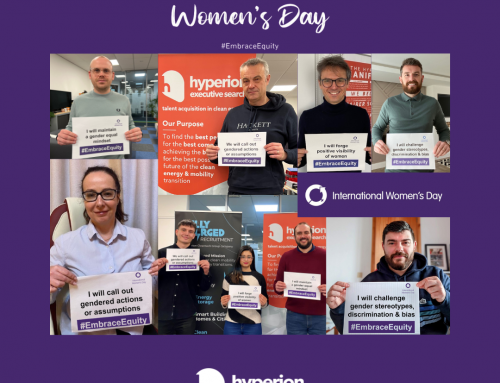There aren’t enough women working in technology. There’s no point shying away from it; it’s a problem across the workforce that stems (bad pun) from too few girls taking up STEM subjects at school.
Whereas the majority of boys (80%) explore science, technology, engineering and mathematics past GSCE, only a third of girls (35%) do the same. The numbers drop off at university but still it’s over half (52%) of male graduates and only a quarter (25%) of women that pursue these subjects.
This is a critical problem because the cleantech sector (and technology in general) is crying out for innovative, creative and highly skilled talent to sustain its evolution and growth. In cleantech specifically, the demand for talent is severe; the sector employs around 130,000 people in the UK alone and this figure is set to double by 2030, something that can only be fully realised by utilising the full workforce at our disposal. It’s not just a UK problem though, similar issues exist globally.
It seems girls and women simply do not see STEM subjects and a career in technology as attractive, with the reasons many and varied. From fearing that a class will be full of boys and problematic male stereotyping, to the gender pay gap and a lack of career role models, women are being excluded from STEM, and therefore cleantech. Actually, there are many, many amazing women in the cleantech sector, but only recently have they had the light shone on them and their achievements. Hyperion’s‘Diversity in Cleantech’ blogs have tried to do their bit, but outside of the sector itself, who sees these awesome women, at all levels, making a big impact?
That’s not to say that steps haven’t been taken. In 2019, the Wise Campaign, which is pushing for real, sustainable improvement to gender balance in STEM roles, reported the milestone of more than one million women working in core STEM roles for the first time. What’s more, in the decade between 2011 and 2020, there was a 50% increase in the number of women accepted onto full-time undergraduate STEM courses.
These improvements in the pipeline mark a positive change in the arena, but if recruitment is an issue, so too is retention, given working environments. Over half of women in STEM have felt a kind of discrimination and the lack of women in leadership roles doesn’t serve as inspiration for others; while the aforementioned 25% undertaking STEM courses at university may seem low, women account for only 10% of leadership positions in the sector.
Cleantech and renewable energy sectors are unfortunately just as, if not more, at fault as they continue to be male dominated. A recent report by the International Renewable Energy Agency (IRENA) highlighted that only 21% of the global wind energy workforce is women, falling below the 32% share of women in global renewables. Yet, IRENA estimates that the number of jobs in renewables could nearly triple (to almost 30 million) by 2050.
A diverse and skilled workforce is needed to tackle the advancements that we simply must be making in the coming years, and anything that can be done to widen talent streams will be paramount. Employing those of different genders – as well as those from different educational and social backgrounds and skillsets – is a necessity.
Government policies that promote better educational balance will play a role in this transition, but they can only go so far. The biggest responsibility sits with businesses and business owners in celebrating the sector and the amazing opportunities it offers, whilst demonstrating the appeal of these opportunities to women. Closing the gender pay gap is a no-brainer, while implementing workplace practices that take female-centric considerations into account, such as policies around menopause and maternity leave, will go a long way towards making cleantech a more appealing and logical option.
There are, as I mentioned, outstanding female role-models out there who can be stellar examples of the work being done. For example, Hyperion recently placed female CEOs, COOs, CMOs and a range of senior posts, in fact in the European business this year over 50% of our placements have been women, showing that the sky is the limit for outstanding female candidates.
Business success – across all sectors, not just cleantech – is dependent on welcoming candidates from a variety of backgrounds. Recruitment processes must take this into account, ensuring a diverse pool for all roles, and accommodating different candidate needs where relevant. Leaders must stop hiring in their image and concede to their potential role in unconscious bias.
In summary, those in positions of seniority with the ability to make a difference must do so. We must focus on hiring employees that can provide highly skilled, innovative solutions, no matter their gender, ethnicity, sexual identity, neurodiversity, age or background.
Article originally published in We Are Tech Women.


